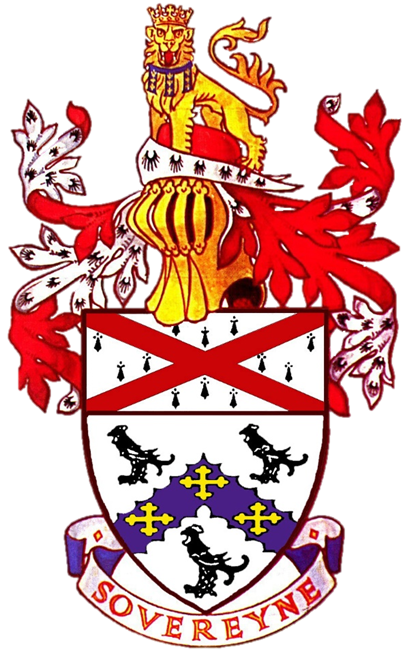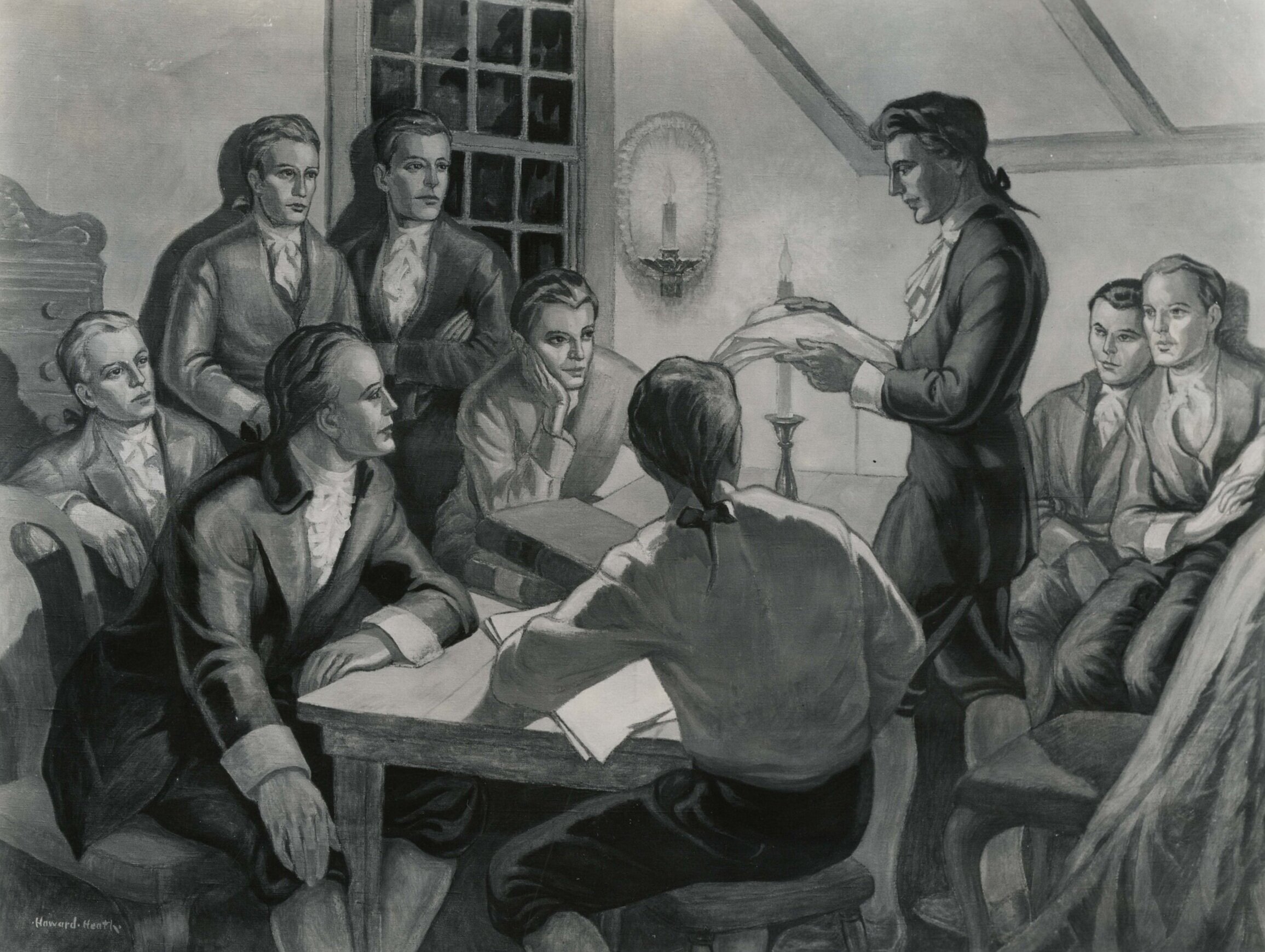The History of Debate at Yale
The Conservative Party traces its heritage to the earliest days of Yale’s history. The literary debating societies of the 18th and 19th centuries were an integral part of Yale life and the intellectual development of its students. Little is known of Crotonia, the college’s first literary society, other than its existence in the mid 1700’s. In 1753, the Linonia Society was founded “for the promotion of Friendship, and social intercourse, and … the advancement of Literature.” Rivals followed in 1768 with Brothers in Unity and in 1819 with Calliope. Many of Yale’s early prominent alumni were members of these societies including Nathan Hale (1773), Noah Webster (1778), Eli Whitney (1789), John C. Calhoun (1804), and Samuel Morse (1810). The literary debating societies prospered into the mid 1800’s, but their influence waned in the latter half of the century as senior societies gained in prestige.
“Nathan Hale at Linonia Society” by Howard Heath (1879-1969).
Other than a short-lived revival of Linonia in the 1870’s, led by future U.S. President William H. Taft (1878), the first major attempt to restore Yale’s debating tradition came in 1887 when members of four debating groups merged to form the Yale Assembly, whose purpose was firstly to “promote the study and practice of the art of debate.” By 1889, interest fell and the effort was abandoned (but not forgotten). In 1890, former Assembly members founded the Yale Union, which held debates on resolutions related to politics and college affairs. The Yale Daily News editorialized the event, hoping that the Yale Union would "resuscitate the interest aroused by the great debating societies of fifty years ago—Linonia and Brothers in Unity.” Other universities took note with the Harvard Union extending an invitation for a joint debate (held in 1892) and a challenge from Princeton’s American Whig and Cliosophic Literary Societies for a debate (held in 1893). The Yale Union soon became the proving ground for intercollegiate debating and set the foundation for the Yale Debating Association, among the oldest groups of its kind in the country. The greatest conservative voice of this period was Robert Alphonso Taft (1910) who “scored the so-called Radicals for their ‘fanaticism.’”
The Yale Union was absorbed into the Yale Debating Association in 1910, but was revived nine years later under the leadership of Henry Robinson Luce (1920), “the leading anti-Bolshevist and pro-Kolchak debater when the Yale Union argued the question of intervention in Russia.” It was in this era that the conservative and radical factions were formally recognized as the Conservative Party and Radical Party within the Yale Union. The Conservatives defended American national interests, industrial development, and private property in opposition to the Radicals’ calls for socialism, nationalization, disarmament, and a sovereign world government. The Union existed as an adjunct to the Debating Association into the late 1920’s.
Robert Alphonso Taft ’10, son of President William H. Taft 1878, was named one of the five greatest senators in U.S. history (the other Yale alumnus being John C. Calhoun 1804).
Henry Robinson Luce ’20 was voted most brilliant in his class and founded Time, Life, and Sports Illustrated magazines; Luce was called “the most influential private citizen of his time.”
With the guidance of Professor Alfred W. Griswold, (1929), later appointed President of Yale University, students and faculty formed the Yale Political Union in 1934. Except for a wartime lapse in 1944, the YPU has continued to present day, often as Yale’s largest student group. For its inaugural meeting, President Roosevelt telegrammed his well wishes citing the Union’s “undoubted value to the nation as well as its university.” With its formation, the YPU recognized the Conservative Party, the Radical Party (later reorganized as the Labor Party) and a third party, the Liberal Party. In the 1930’s, the Conservatives rallied against Tammany Hall politics, collectivism and Roosevelt’s New Deal.
In the post-war period, the Conservatives “produced a monopoly of debating team talent” in the persons of Leo Brent Bozell, Jr. (1950) and William Frank Buckley, Jr. (1950). The duo’s anti-communist arguments and synthesis of conservative principles inspired the Party’s claim as champion of “intelligent conservatism.” As new parties formed and merged, the Conservative Party remained a fixture of Union leadership and was, barring few exceptions, its largest party until the late 1960’s. In the 1970’s, Yale’s increasingly politicized environment led moderates to break with the Party’s roots and reorganize as a centrist group focused on policy issues.
In 1937, Conservative Party members famously founded the “Roosevelt-for-King” Club in response to the President’s court packing scheme, a movement that gained national attention inspiring chapters at Harvard, Princeton and a dozen other colleges.
After two decades of abeyance, the Conservative Party, through the efforts of students and alumni, reemerged in the 1990’s to restore the Party’s tradition of producing philosophical champions and eminent statesmen: what they described as “principled and profound leaders.” In addition to continuing Yale’s legacy of rigorous inquiry through student debate and discourse with professors, the Conservative Party provides much-needed intellectual diversity within the larger campus community. Party members host The Allan Bloom Forum, a lecture series with leading scholars, publish Light & Truth magazine, a journal of student opinion, and founded the William F. Buckley Program at Yale, inspired by one of the Party’s most famous alumni, which sponsors guest speakers, seminars and summer internships. Most recently, Party members co-founded the John Adams Debating Society, a sister organization at Harvard College, to share Yale’s rich heritage of debate with our brothers in Cambridge.
“The Conservative Party is coming alive … thank you for the leadership.” ―New York Governor George Elmer Pataki ’67 at the Spring 2000 Alumni Banquet held at the Yale Club of New York City.
Get in Touch
Interested in joining the Party?
Membership is by Petition. Please contact the Rt. Hon. Chief Whip if interested.
Inquiries from the press are best referred to the Chairman.






